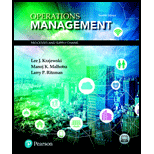During nearly four decades of business operations, Memphis-based FedEx has earned a reputation for reliable, on-time delivery of packages to homes and offices around the country. Founder Fred Smith originally focused on overnight deliveries, choosing Memphis as the company’s headquarters because the airport rarely closes due to bad weather. With FedEx’s planes departing and arriving on schedule nearly all the time, its express shipments usually remained on schedule, then and now. To reassure customers that delivery will take place when and where promised, the firm offers a money-back guarantee on time-sensitive express shipments, among other services.
FedEx has steadily expanded its portfolio of services since the 1970s. Its original overnight express delivery is currently available to U.S. customers in various forms, including “first-overnight” delivery, next-morning delivery, next-afternoon delivery, and budget-pleasing two- or three-day delivery. The company’s services also include cost-effective ground delivery for parcels and extra-speedy same-day delivery for urgent deliveries within 1,800 cities.
Over the years, FedEx has widened its delivery network to more than 220 countries. It has purchased more cargo jets and acquired specialized shipping firms, including Tiger International, Roberts Express, RPS, and TNT Express, to support global growth. For international business customers needing products, parts, or raw materials shipped across countries or continents, the company now offers time-saving services such as commercial freight forwarding and cross-border logistical support.
To add the convenience of local drop-off and pickup points for U.S. consumers and small businesses, FedEx acquired the Kinko’s office services company in 2004 and later rebranded it as FedEx Office. This acquisition also added printing and copying to the menu of services offered. Then the company arranged for large U.S. retailers such as Walgreens, Albertsons, Kroger, and Safeway to accept packages for shipment and receive package delivery for customer pickup in thousands of store locations. This means people who want to send a package can head to a nearby retailer and ship where they shop, rather than making a separate trip to the FedEx location. It’s also a safe alternative for packages to be picked up by people who don’t want FedEx shipments left by the front door.
Another service FedEx offers to small and mid-sized businesses, including retailers, is FedEx Fulfillment. The purpose is to expedite order fulfillment by having each business store its products in a FedEx warehouse. Then, when the business’s customers place orders, FedEx puts the products into boxes bearing the business’s own logo and ships directly to those customers. The business doesn’t need a separate warehouse or staff for fulfillment, and packages are on their way to customers more quickly because the products were in FedEx’s warehouse, ready to be packed and shipped. This service puts FedEx into direct competition with Amazon.com, which offers a similar service to merchants that sell through the online Amazon Marketplace. But it also gives businesses that don’t sell via Amazon a fast and professional fulfillment alternative.
FedEx is careful to let customers know, through media and social-media announcements, when it anticipates that extreme weather or other conditions will cause delays or force it to halt pickups and deliveries. For the duration of Hurricane Irma, for example, FedEx said it would suspend deliveries in Florida. Some Florida customers who had ordered generators to be delivered via FedEx were unhappy, because they worried about being without power during and after the storm. But one FedEx employee loaded several generator orders into his car and took them to customers himself. When a customer posted a grateful compliment to FedEx on Facebook, the message generated thousands of likes, shares, and positive comments. The company also received positive comments for its donations of cash and transportation services to areas devastated by Hurricanes Irma, Harvey, and Maria.
According to the American Customer Satisfaction Index (ACSI), FedEx often tops the list of U.S. shipping companies as ranked by customers surveyed. Every day, the company delivers 13 million packages—and during the busy year-end holiday season, it delivers many more. By meeting customers’ expectations for on-time deliveries, FedEx has increased annual revenues beyond $60 billion and positioned itself for continued growth in the future.
How does FedEx’s money-back guarantee address customers’ concerns about heterogeneity?


 Practical Management ScienceOperations ManagementISBN:9781337406659Author:WINSTON, Wayne L.Publisher:Cengage,MarketingMarketingISBN:9780357033791Author:Pride, William MPublisher:South Western Educational Publishing
Practical Management ScienceOperations ManagementISBN:9781337406659Author:WINSTON, Wayne L.Publisher:Cengage,MarketingMarketingISBN:9780357033791Author:Pride, William MPublisher:South Western Educational Publishing
